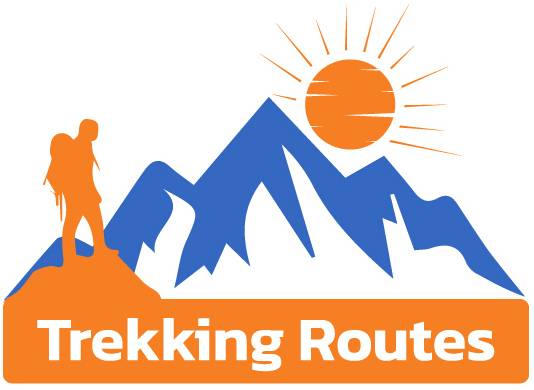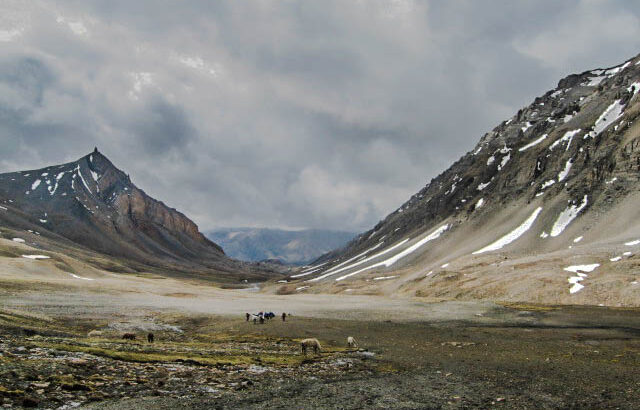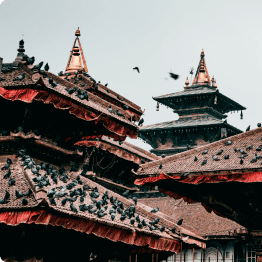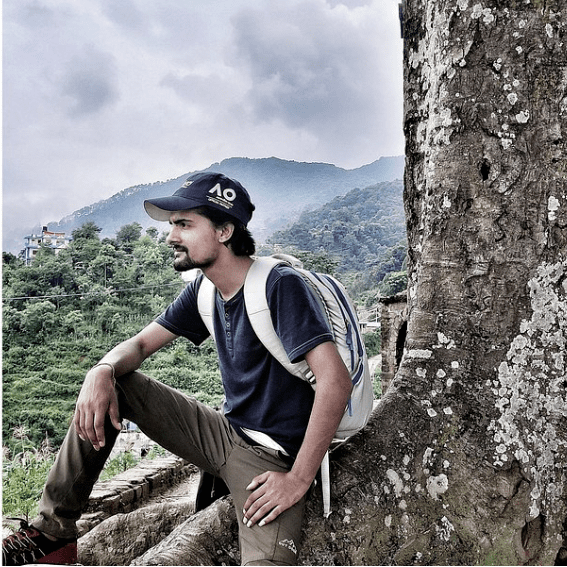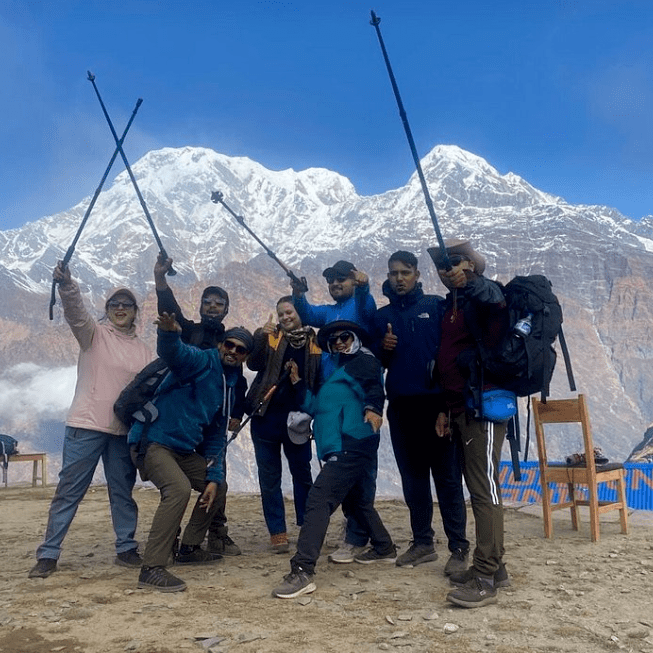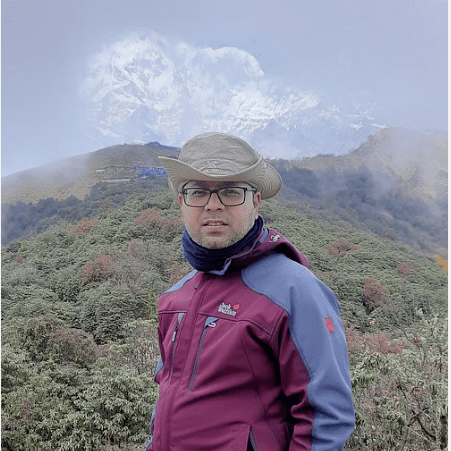Rara Lake Trek
Good To Know
-
Duration 13 Days
-
Activity Trekking
-
Difficulty Type Moderate
-
Best Season Spring & Autumn
-
Max. Altitude 2990m
-
Accommodation Tea House
-
Meal 3 Meal A day
-
Trip Starts Kathmandu
Rara Lake, often referred to as the “Queen of Lakes,” is the largest and deepest freshwater lake in Nepal, situated at an altitude of 2,990 meters (9,810 feet) within Rara National Park in the remote northwestern region of the country. This pristine lake, surrounded by lush forests and snow-capped mountains, offers an unparalleled experience of natural beauty, solitude, and serenity.
Rara Lake is a hidden gem, less frequented by tourists compared to other trekking destinations in Nepal, making it an ideal choice for those seeking tranquility and unspoiled landscapes. The turquoise-blue waters of the lake reflect the surrounding peaks, creating a breathtaking panorama that has to be seen to be believed. The trek to Rara Lake takes you through traditional villages, dense pine and rhododendron forests, and rugged mountain terrain, providing a unique opportunity to experience the rich culture and natural diversity of Nepal.
The journey to Rara Lake is not just about the destination but also about the adventure of reaching it. The trek begins in the town of Jumla, a remote area that retains its traditional charm. As you ascend through the trails, you will encounter diverse flora and fauna, including the rare red panda and Himalayan black bear, and get a glimpse into the life of the local people who have lived in harmony with nature for generations.
Whether you are a seasoned trekker or a nature lover looking for a peaceful retreat, the Rara Lake trek offers an unforgettable experience that combines the best of Nepal’s natural beauty, cultural richness, and adventure.
Highlights
- Rara Lake’s Pristine Beauty: Experience the serene and crystal-clear waters of Rara Lake, surrounded by majestic mountains.
- Rara National Park: Explore the diverse flora and fauna of Rara National Park, home to the rare red panda, Himalayan black bear, and over 200 species of birds.
- Remote and Unspoiled Destination: Enjoy the tranquility and solitude of trekking in one of Nepal’s least visited regions, far from the crowds.
- Traditional Villages: Pass through remote villages like Cherechaur and Murma, where you can experience the local culture and hospitality.
- Panoramic Mountain Views: Witness breathtaking views of the snow-capped Himalayan peaks, including the Kanjiroba and Dhaulagiri ranges.
- Diverse Ecosystem: Trek through dense pine, fir, and rhododendron forests, home to a variety of wildlife and plant species.
- Cultural Immersion: Engage with the local communities, learning about their traditional way of life, customs, and beliefs.
- Off-the-Beaten-Path Adventure: Experience the challenge and thrill of trekking in a remote area with minimal infrastructure, offering a true wilderness experience.
- Camping Experience: Camp by the shores of Rara Lake under the stars, enjoying the peace and quiet of nature.
- Accessible from Kathmandu: Despite its remote location, Rara Lake is accessible via a short flight from Kathmandu to Nepalgunj, followed by another flight to Jumla.
Itinerary
-
Accommodation 3 Star Hotel
-
Max Altitude 1400
-
Meal Breakfast
Your adventure begins with your arrival at Tribhuvan International Airport in Kathmandu. Upon arrival, our representative will greet you and transfer you to your hotel. After check-in, you can relax or explore the nearby streets of Thamel, known for its shops, cafes, and vibrant atmosphere. In the evening, you’ll have a welcome dinner at a traditional Nepali restaurant, where you’ll meet your guide and receive a briefing on the trek. You’ll spend the night in a comfortable hotel in Kathmandu.
-
Accommodation Guest House
-
Max Altitude
-
Meal all meal
After breakfast, you’ll take a flight from Kathmandu to Nepalgunj, a bustling town in the southwestern part of Nepal, near the Indian border. The flight takes about an hour, and upon arrival, you’ll be transferred to your hotel. Nepalgunj is a gateway to the remote regions of western Nepal and has a distinct Terai culture. You’ll have the afternoon free to explore the town or relax at your hotel. You’ll spend the night in Nepalgunj.
-
Accommodation Tea House
-
Max Altitude
-
Meal all meal
Early in the morning, you’ll take a scenic flight from Nepalgunj to Jumla, the starting point of your trek. Jumla is one of the most remote districts in Nepal and offers a glimpse into the traditional lifestyle of the people in this region. After landing in Jumla, you’ll begin your trek to Cherechaur, a small village located about 3 hours away.
The trail passes through pine forests and terraced fields, with occasional views of the surrounding mountains. Cherechaur is a picturesque village with traditional stone houses and a peaceful atmosphere. You’ll stay overnight in a local teahouse in Cherechaur, where you can enjoy a warm meal and rest for the night.
-
Accommodation
-
Max Altitude
-
Meal
After breakfast, you’ll continue your trek from Cherechaur to Chalachaur, a journey of about 5-6 hours. The trail today takes you through dense forests of pine, birch, and rhododendron, with opportunities to spot wildlife such as langur monkeys and various bird species. The path gradually ascends as you approach the village of Chalachaur, which is located on a ridge overlooking the valley.
Chalachaur is a small, remote village where you’ll experience the traditional lifestyle of the local people. The village is surrounded by terraced fields and offers stunning views of the surrounding mountains. You’ll stay overnight in a teahouse in Chalachaur, enjoying the hospitality of the local community.
-
Accommodation
-
Max Altitude
-
Meal
Today’s trek takes you from Chalachaur to the historic Sinja Valley, a journey of about 6-7 hours. The Sinja Valley is the ancient capital of the Khas Kingdom, and it is a culturally and historically significant area in Nepal. The trail descends through a narrow gorge, following the course of the Hima River, and passes through several small villages.
As you enter the Sinja Valley, you’ll notice the change in landscape, with wider fields and more cultivated land. The valley is also known for its archaeological sites, including ancient temples and inscriptions that date back to the 12th century. You’ll stay overnight in a teahouse in Sinja, where you can explore the village and learn about its rich history.
-
Accommodation
-
Max Altitude
-
Meal
After breakfast, you’ll trek from Sinja Valley to Ghorosingha, a journey of about 5-6 hours. The trail today involves a gradual ascent, taking you through dense forests of pine and oak. Along the way, you’ll pass through small settlements where you can interact with the locals and learn about their traditional way of life.
As you approach Ghorosingha, the landscape opens up, offering beautiful views of the surrounding hills and valleys. Ghorosingha is a small village located at the base of a hill, and it serves as a resting point before the final ascent to Rara Lake. You’ll stay overnight in a teahouse in Ghorosingha, enjoying the tranquility of the area.
-
Accommodation
-
Max Altitude
-
Meal
Today is the day you reach your destination, the stunning Rara Lake. After breakfast, you’ll begin the trek from Ghorosingha to Rara Lake, a journey of about 5-6 hours. The trail involves a steep ascent as you climb up to the ridge overlooking the lake. As you reach the top of the ridge, the breathtaking view of Rara Lake surrounded by snow-capped mountains unfolds before you.
Rara Lake is a tranquil and pristine body of water, with crystal-clear blue waters reflecting the surrounding peaks. The lake is surrounded by dense forests of pine, spruce, and juniper, creating a serene and peaceful environment. Upon reaching the lake, you’ll set up camp near the shore and have the rest of the day to explore the area.
You can take a leisurely walk around the lake, enjoy the stunning views, and observe the local wildlife, including various species of birds and mammals. In the evening, you’ll enjoy a campfire by the lake and spend the night in tents, surrounded by the beauty of nature.
-
Accommodation
-
Max Altitude
-
Meal
Today is dedicated to exploring the beauty of Rara Lake and its surroundings. You can take a guided walk around the lake, which is about 13 kilometers in circumference. The walk offers stunning views of the lake from different angles, as well as opportunities to spot wildlife, including the rare red panda and Himalayan black bear.
You can also visit the nearby Murma Top, a viewpoint that offers panoramic views of Rara Lake and the surrounding mountains. The hike to Murma Top takes about 2-3 hours and is well worth the effort for the breathtaking scenery. In the afternoon, you can relax by the lake, meditate, or simply enjoy the peace and quiet of the area.
In the evening, you’ll return to your campsite by the lake and enjoy a warm meal prepared by your guide. You’ll spend another night in tents, with the stars shining brightly overhead.
-
Accommodation
-
Max Altitude
-
Meal
After enjoying the sunrise over Rara Lake, you’ll begin your trek back towards civilization. Today’s journey takes you from Rara Lake to the village of Pina, a trek of about 5-6 hours. The trail descends gradually through forests and meadows, offering beautiful views of the surrounding mountains.
Pina is a small village located in a valley, and it serves as a stopping point for trekkers on their way back from Rara Lake. The village is known for its traditional houses and warm hospitality. You’ll stay overnight in a teahouse in Pina, enjoying a comfortable bed and a home-cooked meal.
-
Accommodation
-
Max Altitude
-
Meal
After breakfast, you’ll continue your trek from Pina to Bumra, also known as Nauri Ghat. The trail today involves a gradual descent through pine and birch forests, with occasional views of the surrounding hills. You’ll pass through several small villages where you can interact with the locals and learn about their way of life.
Bumra is a small village located near a river, and it serves as a resting point before the final leg of the trek. The village is surrounded by forests and fields, creating a peaceful and serene environment. You’ll stay overnight in a teahouse in Bumra, enjoying the last night of your trek.
-
Accommodation
-
Max Altitude
-
Meal
Today is the final day of your trek, as you make your way from Bumra back to Jumla. The trek takes about 5-6 hours and involves a gradual ascent through forests and fields. As you approach Jumla, you’ll notice the change in landscape, with more cultivated land and traditional houses.
Upon reaching Jumla, you’ll check into a local teahouse and have the rest of the day to relax or explore the town. Jumla is a traditional town with a rich cultural heritage, and you can visit local temples or stroll through the markets. You’ll stay overnight in Jumla, enjoying a warm meal and reflecting on the incredible journey you’ve just completed.
-
Accommodation
-
Max Altitude
-
Meal
After breakfast, you’ll take a flight from Jumla to Nepalgunj, followed by a connecting flight to Kathmandu. Upon arrival in Kathmandu, you’ll be transferred to your hotel, where you can rest or explore the city at your own pace.
The rest of the day is free for you to do some last-minute shopping, visit cultural sites, or relax at your hotel. In the evening, you’ll enjoy a farewell dinner at a traditional Nepali restaurant, where you can share your experiences with fellow trekkers. You’ll stay overnight in Kathmandu.
-
Accommodation
-
Max Altitude
-
Meal
On your final day, you’ll be transferred to Tribhuvan International Airport for your departure flight. As you leave Nepal, you’ll carry with you the memories of the stunning Rara Lake, the warm hospitality of the local people, and the adventure of trekking in one of the most remote and beautiful regions of the Himalayas.
Inclusions/Exclusions
What's Included
- Accommodation: Hotels in Kathmandu and Nepalgunj; teahouse lodges and camping during the trek.
- Meals: Breakfast in Kathmandu and Nepalgunj; all meals during the trek (breakfast, lunch, and dinner).
- Transportation: Private vehicle for all transfers; flights between Kathmandu, Nepalgunj, and Jumla.
- Permits and Entrance Fees: Rara National Park entry permit, TIMS (Trekkers’ Information Management System) card.
- Guide and Porter: Experienced trekking guide and porter to carry your luggage.
- Camping Equipment: Tents, sleeping bags, and cooking equipment for the nights spent camping.
What's Excluded
- Personal Expenses: Snacks, drinks, souvenirs, and personal shopping.
- Travel Insurance: Mandatory travel insurance covering high-altitude trekking.
- International Flights: Flights to and from Nepal.
- Visa Fees: Nepal entry visa fees.
- Tipping: Tips for guides, porters, and drivers.
- Extra Services: Any additional services not mentioned in the package.
Rara Lake Trek Essential Info
Best Time to Trek to Rara Lake
The best time to trek to Rara Lake is during the spring (March to May) and autumn (September to November) seasons. These months offer stable weather, clear skies, and moderate temperatures, making it ideal for trekking. Spring brings blooming rhododendrons, adding vibrant colors to the forests, while autumn offers the clearest mountain views. Winter (December to February) can be cold, especially at higher altitudes, but the trek is still possible with proper gear. The monsoon season (June to August) brings heavy rainfall, which can make the trails slippery and less enjoyable.
Physical Fitness and Preparation
The Rara Lake Trek is a moderate to challenging trek that requires a good level of physical fitness. The trek involves daily walks of 5-7 hours on rugged and often steep terrain. While no prior trekking experience is required, it’s advisable to engage in regular cardiovascular exercises like walking, jogging, or cycling in the weeks leading up to the trek to build stamina. Trekking poles can be helpful for stability on steep sections. A positive attitude and a love for adventure are essential for this trek.
Packing List
Packing wisely is crucial for a successful and enjoyable trek to Rara Lake. Here’s what you should bring:
- Clothing: Layered clothing for varying temperatures, including moisture-wicking base layers, a warm fleece or jacket, trekking pants, a waterproof jacket, and gloves.
- Footwear: Sturdy trekking boots with good ankle support and grip, along with comfortable socks.
- Accessories: A sun hat, sunglasses, and sunscreen for protection against the sun; a headlamp or flashlight for early morning and evening walks.
- Essentials: A reusable water bottle, a small daypack, trekking poles, a first-aid kit with basic medications, personal hygiene items, and a camera to capture the stunning views.
- Camping Gear: While basic camping equipment is provided, you may want to bring a personal sleeping bag liner for added warmth and comfort.
- Documents: Your passport, trekking permits, travel insurance details, and some cash in Nepalese Rupees.
Health and Safety
Health and safety are paramount when trekking in remote regions like Rara Lake. It’s important to stay hydrated, drink plenty of water, and avoid alcohol during the trek. Be aware of the symptoms of altitude sickness, which can occur at altitudes above 2,500 meters. Symptoms include headaches, nausea, dizziness, and shortness of breath. If you experience any of these symptoms, inform your guide immediately and descend to a lower altitude if necessary. Carry a basic first-aid kit with bandages, antiseptic, pain relievers, and any personal medications you may need. Travel insurance that covers high-altitude trekking is mandatory.
Local Culture and Etiquette
The Rara Lake Trek takes you through remote villages where you’ll have the opportunity to experience the traditional culture and hospitality of the local people. It’s important to respect local customs and traditions while trekking. Dress modestly, covering your shoulders and knees, especially when visiting temples or monasteries. Always ask for permission before photographing people, particularly in rural areas. Greet locals with a friendly “Namaste,” and be open to learning about their way of life. Supporting local teahouses and purchasing handicrafts is a great way to contribute to the local economy.
Environmental Responsibility
Rara National Park is one of Nepal’s most beautiful and ecologically diverse areas, and it’s important to minimize your impact on the environment while trekking. Follow the Leave No Trace principles by packing out all your trash and disposing of it properly in designated areas. Avoid using single-use plastics, such as bottled water; instead, carry a reusable water bottle and use water purification tablets or a filter. Stick to marked trails to avoid damaging fragile ecosystems and refrain from picking flowers or disturbing wildlife. Support local conservation efforts by respecting wildlife and contributing to community-based projects that promote sustainable tourism.
Accessibility and Transportation
Despite its remote location, Rara Lake is accessible via a short flight from Kathmandu to Nepalgunj, followed by another flight to Jumla. The flights offer stunning aerial views of the Himalayas and are a quicker alternative to road travel. The roads in the region are narrow and winding, so it’s advisable to travel with an experienced driver if traveling by road. The return trip from Jumla to Kathmandu can be completed in one day, with a layover in Nepalgunj. If you’re prone to motion sickness, consider taking medication before the flight or drive.
Accommodation and Dining
Accommodation on the Rara Lake Trek is in teahouses, which offer basic lodges with simple rooms, often with twin beds and shared bathrooms. Some teahouses may offer attached bathrooms at lower altitudes. The teahouses provide meals, typically consisting of traditional Nepali dishes like dal bhat (lentils and rice), as well as international options like pasta, soup, and pancakes. Meals are usually hearty and provide the necessary energy for trekking. It’s important to stay hydrated, so drink plenty of water, and consider carrying your own snacks for extra energy along the trail.
Photography Opportunities
The Rara Lake Trek offers endless photography opportunities, with stunning landscapes, cultural experiences, and majestic mountain views at every turn. The crystal-clear waters of Rara Lake reflecting the surrounding peaks are a photographer’s dream. Along the trail, you’ll find opportunities to photograph traditional villages, terraced fields, lush forests, and diverse flora and fauna. If you’re interested in night photography, the clear skies at higher altitudes offer the chance to capture starry nightscapes. Make sure to bring extra batteries and memory cards, as there are limited charging facilities on the trail.
Responsible Tourism
As a trekker in the Rara National Park, you play a crucial role in preserving the natural beauty and cultural heritage of the area. Practice responsible tourism by respecting the environment, supporting local communities, and preserving cultural traditions. When trekking, be mindful of your impact on the trail and the surrounding ecosystem. Engage with local villagers respectfully, learn about their customs, and support their businesses by purchasing local products or services. By being a responsible traveler, you help ensure that Rara Lake remains a pristine and welcoming destination for future visitors.
FAQs
The best time to trek to Rara Lake is during the spring (March to May) and autumn (September to November) when the weather is stable, and the skies are clear, offering the best views of the lake and surrounding mountains.
The Rara Lake Trek is considered a moderate to challenging trek, suitable for experienced trekkers and those with good physical fitness. It involves daily walks of 5-7 hours on rugged terrain.
Yes, having a guide is highly recommended for the Rara Lake Trek due to the remote location and limited infrastructure. A guide can provide valuable insights into the local culture, history, and natural environment, and ensure your safety.
Pack layered clothing for varying temperatures, sturdy trekking boots, a reusable water bottle, a small daypack, trekking poles, and essentials like sunscreen, a hat, and sunglasses.
Yes, the Rara Lake Trek is possible in winter (December to February), but be prepared for cold temperatures, especially at higher altitudes. Proper gear, including warm clothing and sleeping bags, is essential.
The standard Rara Lake Trek itinerary takes about 12-14 days, including travel to and from Kathmandu. The trek itself typically lasts 8-10 days, depending on your pace and the time spent at the lake.
Accommodation is in teahouses, which offer basic lodges with simple rooms, usually with twin beds and shared bathrooms. Some nights will be spent camping near the lake.
Rara Lake is located at an altitude of 2,990 meters (9,810 feet). While this is not extremely high, it’s important to pace yourself and stay hydrated to avoid altitude sickness.
Yes, the trek passes through remote villages where you can experience the traditional culture, customs, and hospitality of the local people, including the Khas, Thakuri, and Raji communities.
Support responsible tourism by respecting local customs, minimizing your environmental impact, supporting local businesses, and preserving the natural beauty and cultural heritage of the area.
